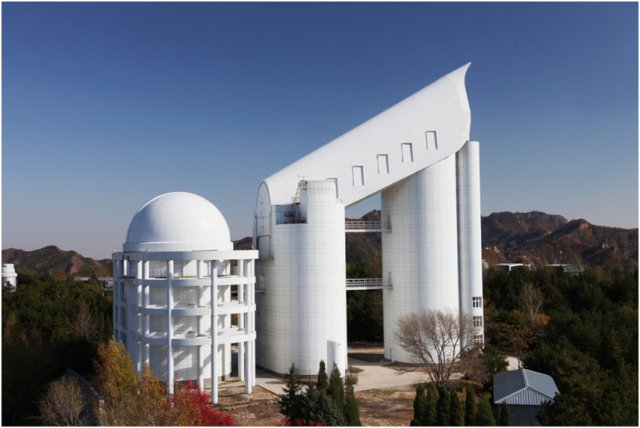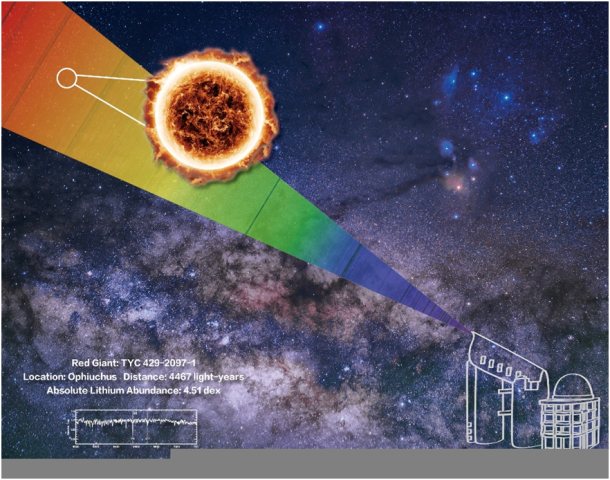The findings were realized with the help of The Large Sky Area Multi-Object Fiber Spectroscopic Telescope (LAMOST), a special quasi-meridian reflecting Schmidt telescope located in Xinglong Observatory of NAOC in northern China. The telescope can observe about 4,000 celestial bodies at one time and has made a massive contribution to the study of the structure of the Galaxy.
Their result of the study was published online in Nature Astronomy on August 6th, 2018.
Lithium, atomic number 3, is considered one of the three elements synthesized in the Big Bang, together with Hydrogen and Helium. The abundance of the three elements was regarded as the strongest evidence of the Big Bang.
The evolution of lithium has been widely studied in modern astrophysics, however, a few giants were found to be lithium-rich in the past three decades. This makes the lithium study remarkably challenging.
“The discovery of this star has largely increased the upper limit of the observed lithium abundance, and provides a potential explanation to the extremely lithium-rich case,” said Prof. ZHAO Gang.
Detailed information of the star was obtained by a follow-up observation from the Automated Planet Finder (APF) telescope at Lick Observatory.
Besides measuring the anomalously high lithium abundance, the research team also proposed a possible explanation to the lithium-rich phenomenon by the nuclear network simulation with the up-to-date atomic data as an input.
The research team was led by Dr. YAN Hongliang, Prof. SHI Jianrong and Prof. ZHAO Gang from NAOC. Scientists from other five institutions, including China Institute of Atomic Energy and Beijing Normal University, also joined the team.
Finished in 2008 and began regular survey mission in 2012, LAMOST has helped Chinese scientists with a final catalogue of about 10 million spectra after its six-year regular survey, and establish the world's largest databank of stellar spectra this June.
(https://www.nature.com/articles/s41550-018-0544-7)




